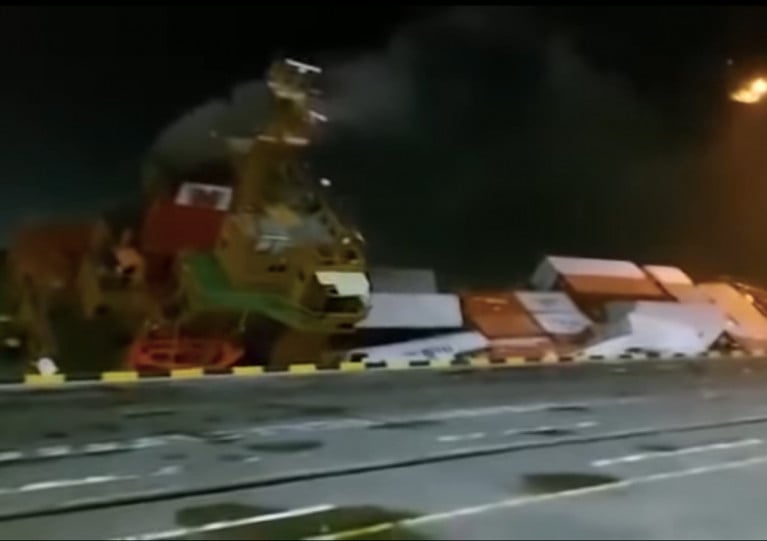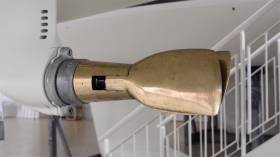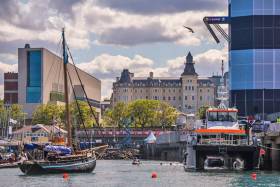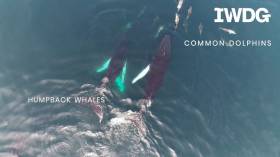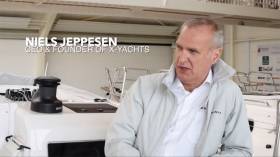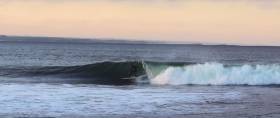Displaying items by tag: video
New Video Show Rare and Previously Unseen Footage of the Titanic From 1986
A remarkable video including rare and previously unreleased footage reveals some of the first ever views of the wreck of the Titanic.
As the Belfast Telegraph reports, the feature-length posting on the Woods Hole Oceanographic Institution’s YouTube channel comprises uncut footage from a 1986 expedition to the site led by Robert Ballard, just months after the RMS Titanic’s final resting place was found.
The oceanographic team famously explored the site with a three-person submarine named Alvin, and captured images of its interior with and ROV called Jason Jr.
In a statement accompanying the film, Hollywood director and noted deep-sea exploration enthusiast James Cameron said: “By releasing this footage, WHOI is helping tell an important part of a story that spans generations and circles the globe.”
The Belfast Telegraph has more on the story HERE.
New Footage of 1970 Fireball Worlds in Fenit Emerges Online
Film footage of the 1970 Fireball World Championship hosted in Fenit by Tralee Bay Sailing Club has been digitised after more than 50 years and has been shared online by John Caig, who won the event with Jack Davies.
According to Caig, the original 16mm film had deteriorated over the decades but a BBC engineer was able to transfer the footage to digital at a higher resolution than existing colour video of the event.
Barry O’Neill of the Royal St George Yacht Club provided Afloat.ie with more details about the film, which was made on “zero budget” by O’Neill and colleagues from the former Arks advertising agency.
Members of the Celtic rock band Horslips also worked at the agency at the time, and O’Neill says he roped them in to compose music for the film, which may mark “one of the first times Horslips had been in a recording studio”.
Video Captures Drama of Indonesian Container Ship Capsize
Dramatic footage has emerged of a container ship slowing sinking at a port in Indonesia over the weekend.
The video shows the cargo vessel Mentari Crystal capsizing alongside the pier at Teluk Lamong Terminal in the city of Surabaya — and taking with it its payload of 137 containers.
According to Marine Insight, all crew members were reported to be safe and unharmed by the incident, which is believed to have been caused by faulty ballasting that affected the ship’s stability.
Safehaven Marine have shared new video from rough weather sea trials for its latest pilot boat, Dalmore, as well as its new XSV20 named Safehaven.
As previously reported on Afloat.ie, Dalmore is an Interceptor 48 — the 15th of this model, and 40th pilot boat overall for Safehaven Marine — commissioned by the Port of Cromarty Firth in Scotland.
Also on trial was the Cork-based extreme performance boatbuilder’s latest XSV20, which is soon to take up residence in the Bay of Biscay.
Safehaven follows Thunder Child II, the next generation of the piercing monohull class that will now see its world record Transatlantic attempt take place in summer 2020 — thanks in part to the busy business’ full order book this year.
Ensuring there’s no unnecessary high resistance in the water is one key to the success of X-Yachts hull designs over the years, as CEO and founder Niels Jeppesen explains in the latest instalment of its video series, which you can watch below.
Jeppesen highlights features such as hinged propellers that close into a fin shape when not in use, retractable bow thrusters, and optimise placement of water tanks among features that make their boats’ handling a breeze in or out of the marina.
Previously, Jeppesen covered how the Danish sailing yacht builder arrived at its unique brand name.
Red Bull’s official media partners have shared some specular footage of the action from this past weekend’s Cliff Diving World Series stop in Dun Laoghaire Harbour.
Crowds numbering some 145,000 were in attendance over Saturday 11 and Sunday 12 May, amounting to the highest ever spectator turnout in the event’s 10-year history.
And they were thrilled by a dazzling performance by reigning women’s champion Rhiannan Iffland as she continued her dominance.
Meanwhile, in the men’s division, Romania’s Constantin Popovici scored victory in only his second event, after placing second in his debut at April’s opening leg in the Philippines.
Whale watchers have captured spectacular aerial video of a group of humpback whales spotted “socialising” off West Cork.
The Irish Whale and Dolphin Group’s science officer Seán O’Callaghan filmed the remarkable scene last month just days after the first humpback whale sighing of the year was made in the same region, sailing out of Reen Pier.
“We had perfect sea conditions to search for cetaceans (whales, dolphins and porpoises) but our efforts to spot distant large whale blows were hampered by Saharan sand that caused a thick haze at sea,” the IWDG said.
“However, we did connect with up to six humpback whales feeding and socialising in offshore waters which allowed us to collect the first set of aerial images and video that will be used to estimate the length and body condition of these iconic giants.”
The video shows four of the humpback whales interacting with each other while common dolphins swim just ahead and among them.
And it marks the first significant contribution to WhaleTrack Ireland — the IWDG’s new drone-based citizen science project, supported by Ryanair, which aims to find out what these and other marine wildlife giants are doing within and beyond Irish waters.
In the first of a new video series from X-Yachts, CEO and founder Niels Jeppesen explains how the Danish sailing yacht builder arrived at its unique name.
It might surprise some in the yachting community to know that from its inception in 1979, the company originally used the name of a pre-existing firm started by co-founder Birger Hansen to manufacture fibreglass tops for the popular Citroen 2CV.
And it was a number of years until a Swedish importer suggested that the ‘X’ naming convention for their increasingly popular yacht designs — derived from their initial plan to extend the sailing cloth by 10 centimetres — would make a more arresting brand.
Surfing In Ireland Is A Sure Shot For All Experience Levels
#Surfing - It’s no longer such a secret that Ireland has some of the most sought-after swells among the world’s top big wave surfing talent.
But beginners aren’t left out of Surfer Today’s list of '10 surf spots you must visit in Ireland', with Inchydoney in West Cork and Achill Island in Co Mayo noted for their scenery as much as their perfect starter waves.
Sligo features on the list with two wave hotspots, Enniscrone and Easkey — both just west of Sligo town, which again hosts the Shore Shots Irish Surf Festival on the weekend of 22-23 April.
The North West is also the ancestral home of Irish-Australian surf pro Mick Fanning — famous for his close call with a shark off South Africa in 2015 — who recently paid a visit to sample the surf for himself, as documented in this new Rip Curl video:
Surfing Farmers Make Waves In Co Clare
#Surfing - Lahinch-based surfing pro Fergal Smith is the subject of not one but two recent online documentaries — and neither for his big wave exploits.
Smith turned to organic farming after a globetrotting surfing career, teaming up with fellow wave-riders Mitch Corbett, Matt Smith and others to start the Moy Hill Community Garden.
Having grown up around organic farming all his life, Smith saw an opportunity to share what he learned with his fellow surfers — and encourage young people to get interested caring for the land.
Their organic farming collective and its location on the stunning Wild Atlantic Way are the subjects of ‘Beyond the Break’, a short film for The Perennial Plate — a series that aims to highlight local producers around Ireland’s breathtaking landscape, as the Clare Herald reports.
Yet at the third episode of ‘food ranger’ Mark Harris’ Endless Winter Europe series shows, Smith and his surfing mates still make time for the water when the surf is up.


























